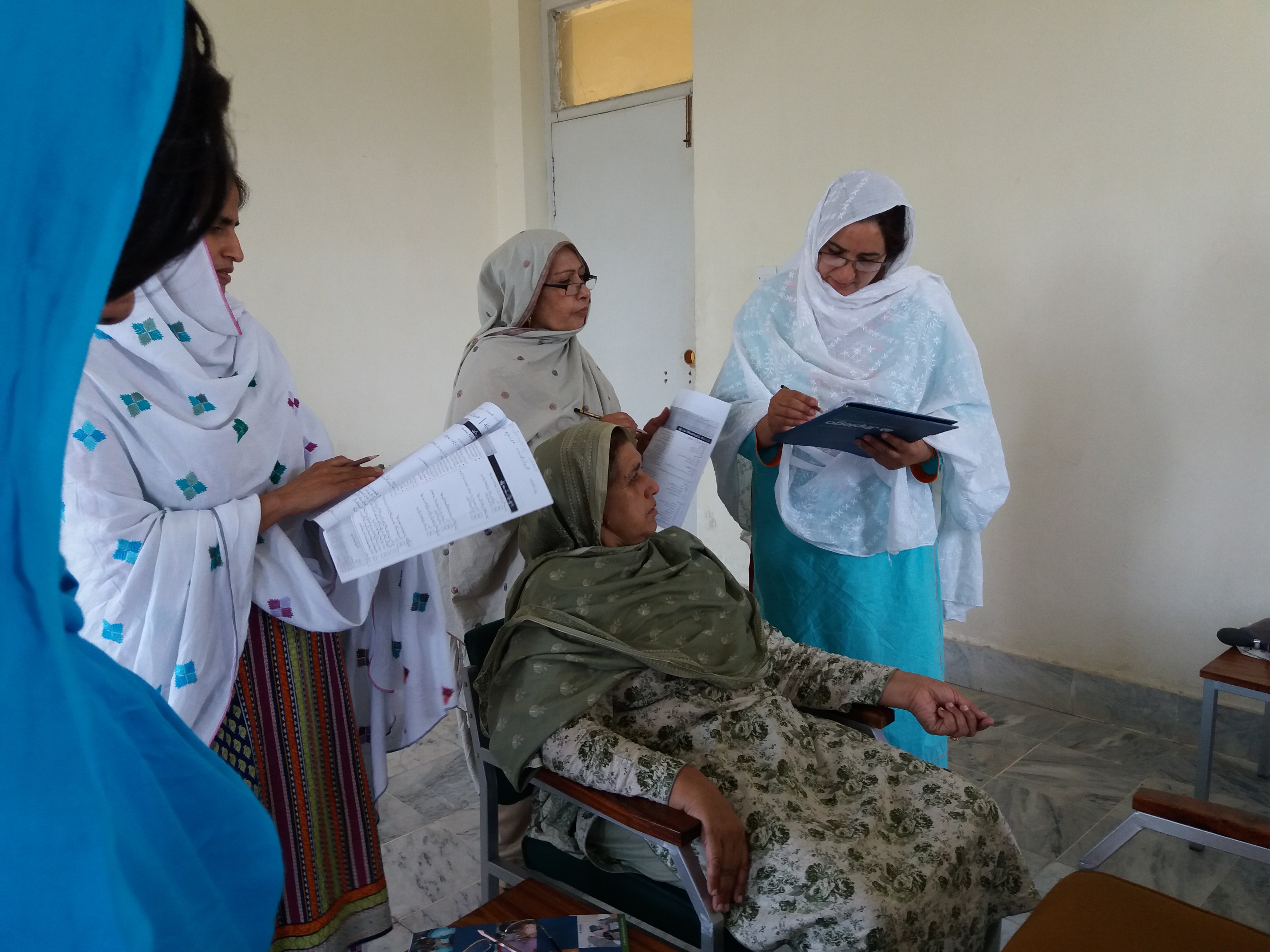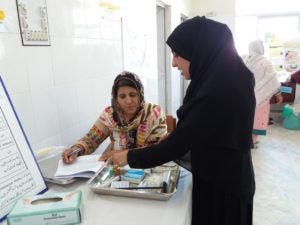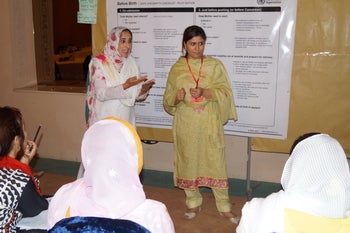
Ariadne Labs has partnered with implementers in over 30 countries across the world to integrate the WHO Safe Childbirth Checklist into their current health system. Each region is extremely diverse – politically, economically, and socially. Ariadne Labs offers customized coaching and technical assistance to each region to facilitate implementation success. As each of our partners implement, we try to understand their unique implementation successes and challenges in order to continue to improve our solutions and share lessons learned with the wider community around us.
Over the past 2 years, Jana Kuhnt and Sebastian Vollmer from University of Göttingen in Germany have been implementing the WHO Safe Childbirth Checklist as part of randomized controlled trial in Pakistan. They recently completed their research and Emily George, Clinical Implementation Specialist, sat down to speak with them about their implementation experience.
Can you describe the region of Pakistan where you were working and why you wanted to implement the WHO Safe Childbirth Checklist?
The study was conducted in two districts, Haripur and Nowshera, of the province Khyber Pakhtunkhwa (KP) in the Northwest of Pakistan. Women and children in these districts are particularly disadvantaged and economically deprived. Half of all deliveries are still home-based and the private sector receives more deliveries than the public facilities. The public referral system does not yet adequately work and secondary facilities are often overburdened with cases that could have been handled by primary facilities. Those are often restrained in offering adequate services by short opening hours and lack of basic medication. By implementing the WHO Safe Childbirth Checklist, our goal was to expand the evidence on the checklist within a different health setting and to offer a more standardized approach to the childbirth experience within facilities in these districts.

Tell us a little more about the intervention and how the checklist was used.
We included different types of health providers in both districts to test the checklist in diverse environments and to cover the entire public health system in the area. Those included primary and secondary health facilities as well as non-facility based Community Midwives and privately working Lady Health Visitors. First, Basic Emergency Obstetric training was held with all providers in the district. Following that, treatment providers received an additional day of training focused on each item on the Safe Childbirth Checklist (SCC). All SCC items were explained in detail, role-plays and practical drills were conducted and a motivational video was shown. Also, participants learned how to introduce the checklist into their everyday work processes.

After the training, each of the key clinical and administrative leaders of the health facilities had an official kick-off event with their staff members to mark their official start of using the checklist. Local political representatives attended each event to show their support of the effort.
Lastly, our local project manager conducted monthly monitoring visits with all the providers. During those visits, problems were discussed and feedback on checklist use was gathered. These visits were well received by all providers, especially by those in very rural and remote areas, as they welcomed the added support.
What were some of your key lessons learned?
It seems that the checklist use was very dependent on a motivated and engaged clinical leader. We had difficulties with frequent staff turnover and it was the duty of the clinical leader to train all new staff on the checklist and motivate the team to regularly use it. Qualitative insights suggest that especially the Community Midwives liked the new tool as it gave them a feeling of empowerment and security towards their supervisors. Overall, we have seen that simply introducing the checklist among providers will not yield success. It needs long-term commitment and effort of all involved parties to remove initial barriers and change attitudes and current practices. It is a tool that rests upon the socio-cultural adoption by the respective providers.
Note: This project was financed and supported by the Deutsche Gesellschaft für International Zusammenarbeit (GIZ) GmbH who work on behalf of the German Federal Ministry for Economic Development and Cooperation (BMZ). It was conducted in close cooperation and with continuous support of the Department of Health in KPK, the District Health Offices in Haripur and Nowshera and several additional partners at the national, provincial and district level.


